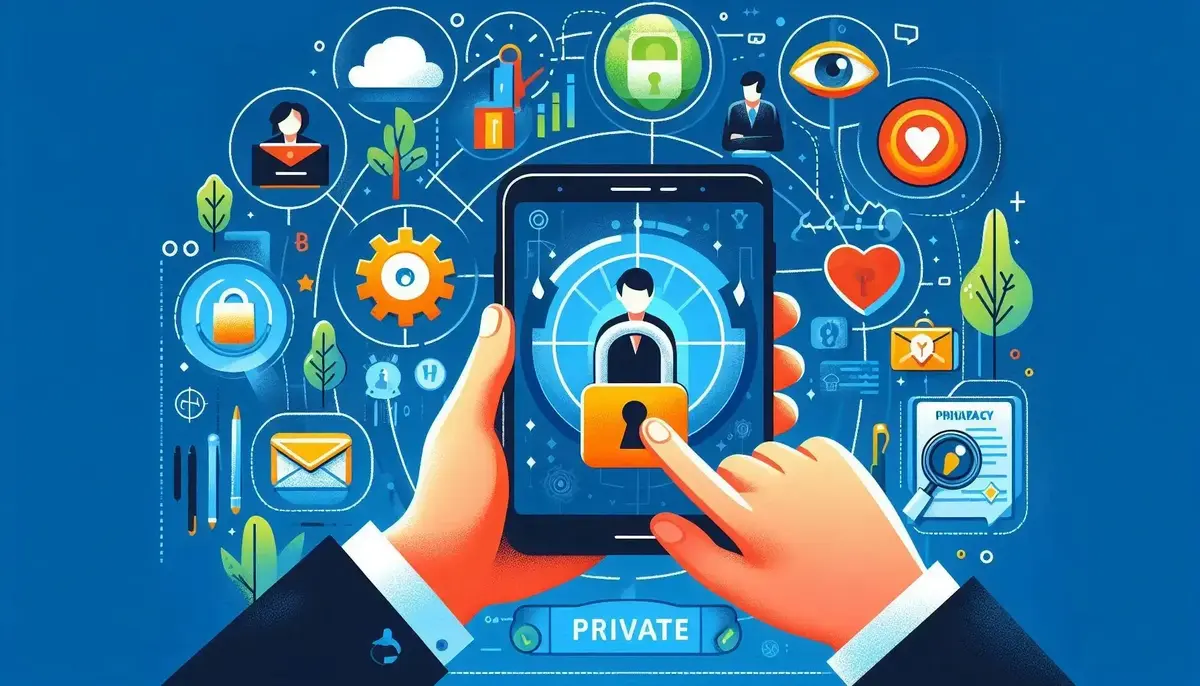In an age where privacy and security of data are important, it is vital that you ensure your app is secure. If you are developing an app to be used by a small group or niche market, it is important that the data of your users and their privacy is protected. This is a guide that explains how to make your app private.
1. UNDERSTAND THE PRIVACY REQUIREMENTS
It’s important to know the privacy requirements of your app before you begin. The privacy requirements of different apps vary depending on their user base, functionality and type of data. A health app, for example, will have different privacy requirements than a social media application. Be familiar with the relevant regulations, such as the General Data Protection Regulation in the EU and the California Consumer Privacy Act in the US.
2. SECURE USER AUTHENTIFICATION
Secure user authentication is the key to making your app private. Here are some best practice:
Strengthen Passwords: Use strong password policies and enforce them to make sure users use complex passwords.
Multi-Factor authentication (MFA): This adds an extra layer to security by requiring the user to confirm their identity using a second method such as a SMS message or authentication application.
OAuth: Use OAuth to secure your authorization. This will allow users to login through trusted platforms such as Google and Facebook.
3. ENCRYPT DATA
It is essential to encrypt data in order to protect the user’s information, both during transit and when it is at rest. It ensures that data can’t be read if intercepted, or accessed by unauthorized parties.
SSL/TLS : Encrypt the data sent between your app’s servers and Secure Sockets Layers (SSL).
Use strong encryption algorithms like AES-256 to store data.
Database Encryption : Add an extra layer to security by encrypting sensitive data in your database.
4. IMPLEMENT ROLE-BASED ACCESS CONTROL (RBAC)
Role-Based Access Control ensures users have only access to data and functionality necessary for their roles. This reduces the risk of unauthorised access.
Define User Roles: Clearly identify the user roles, and the permissions that go with them.
Implementing access control measures to enforce these permissions is essential.
5. SECURITY REGULAR AUDITS
Regularly conduct security audits in order to identify and fix any vulnerabilities that may exist within your app. This includes both manual and automated reviews.
Hire security experts to conduct penetration testing by simulating attacks and identifying weaknesses.
Code Reviews: Review your code regularly for security flaws, and make sure that best practices are being followed.
6. TRANSPARENT POLICY ON PRIVACY
A transparent and clear privacy policy will help you build trust with users and comply with the law.
Data Collection: Explain the data that your app collects and how it’s used.
Users Rights: Inform the users about their rights in relation to their data. For example, they can access, modify or delete it.
Third-Party sharing: Identify whether and how data is shared by third parties.
7. SECURE COMMUNICATION – IMPLEMENT IT
To prevent data breaches, it is essential to have a secure communication channel between your app’s server and your app.
API Security: Make sure that APIs are used by your application and adhere to best practices such as rate-limiting and input validation.
Secure Channels: All data exchanges should be done via HTTPS or other secure channels.
8. USER CONSENT AND PREFERENCES
It is important to obtain the consent of users for data collection, and provide them with options on how they can manage their privacy preferences.
Consent Forms – Use clearly defined consent forms to get explicit permission from the users regarding data collection and processing.
Privacy Settings: Give users the option to customize privacy settings such as opting-out of data collection and marketing communications.
9. UPDATES REGULARLY AND PATCHES
Update your app, and all its dependencies, with the latest security patches. This will help protect you from known vulnerabilities.
Automated Updates – Implement automated updating mechanisms to ensure timely deployment.
Manage dependencies: Review and update all third-party libraries, frameworks and libraries that your app uses.
10. USER EDUCATION
Your app’s security can be improved by educating your users on the importance of privacy.
Tips and Guidelines: Give tips and guidelines for creating strong passwords and recognizing phishing attacks.
Help Center: Create a FAQ or help section that contains information about privacy and security.
CONCLUSION
To make your app private, you need a comprehensive strategy that includes user authentication with secure encryption, access controls, regular security audits and transparent communication. Following these best practices will help you create a private and secure environment for your users. This will ensure their data is protected, and their trust maintained.
